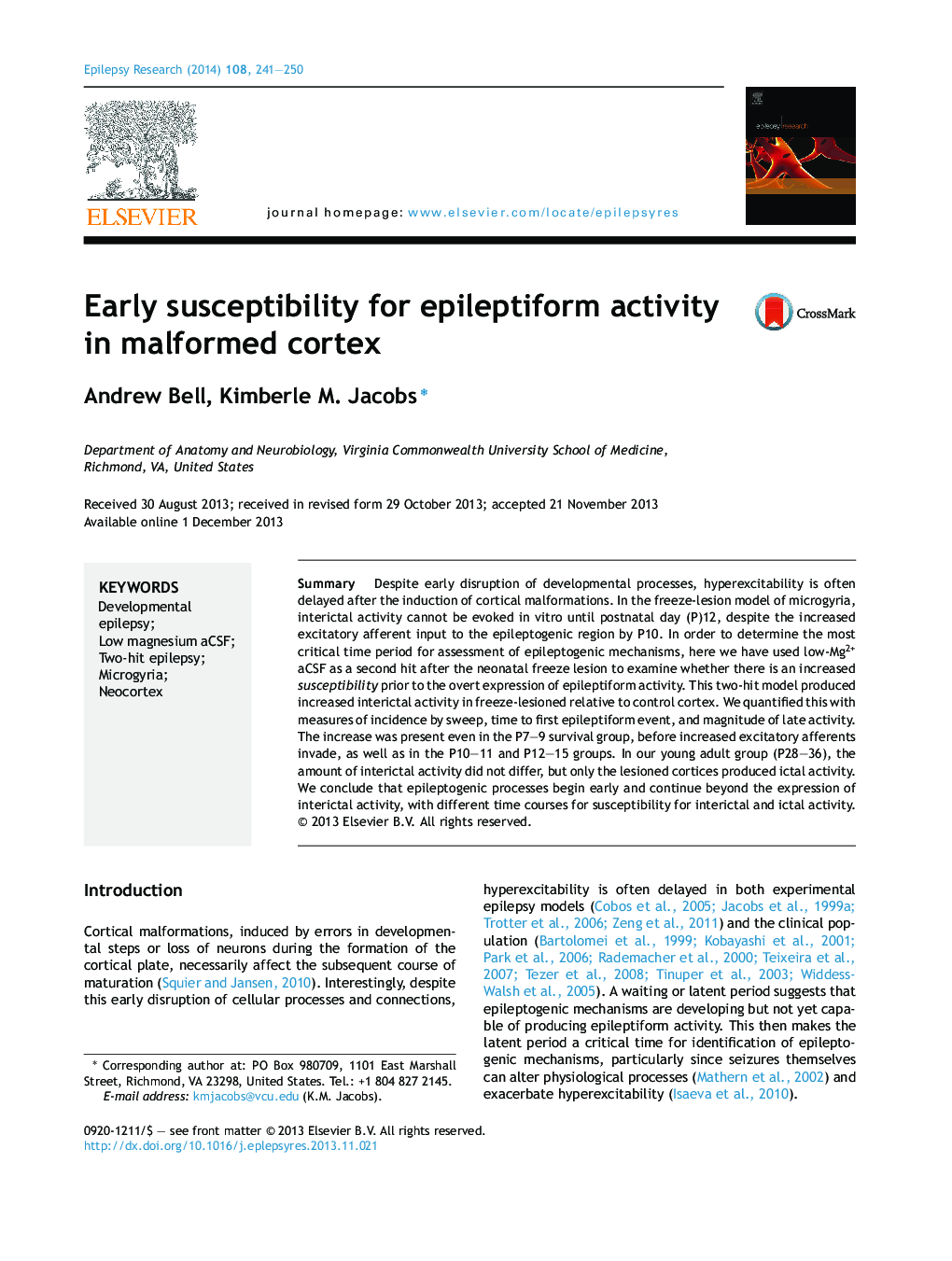| Article ID | Journal | Published Year | Pages | File Type |
|---|---|---|---|---|
| 6015791 | Epilepsy Research | 2014 | 10 Pages |
Abstract
Despite early disruption of developmental processes, hyperexcitability is often delayed after the induction of cortical malformations. In the freeze-lesion model of microgyria, interictal activity cannot be evoked in vitro until postnatal day (P)12, despite the increased excitatory afferent input to the epileptogenic region by P10. In order to determine the most critical time period for assessment of epileptogenic mechanisms, here we have used low-Mg2+ aCSF as a second hit after the neonatal freeze lesion to examine whether there is an increased susceptibility prior to the overt expression of epileptiform activity. This two-hit model produced increased interictal activity in freeze-lesioned relative to control cortex. We quantified this with measures of incidence by sweep, time to first epileptiform event, and magnitude of late activity. The increase was present even in the P7-9 survival group, before increased excitatory afferents invade, as well as in the P10-11 and P12-15 groups. In our young adult group (P28-36), the amount of interictal activity did not differ, but only the lesioned cortices produced ictal activity. We conclude that epileptogenic processes begin early and continue beyond the expression of interictal activity, with different time courses for susceptibility for interictal and ictal activity.
Keywords
Related Topics
Life Sciences
Neuroscience
Neurology
Authors
Andrew Bell, Kimberle M. Jacobs,
